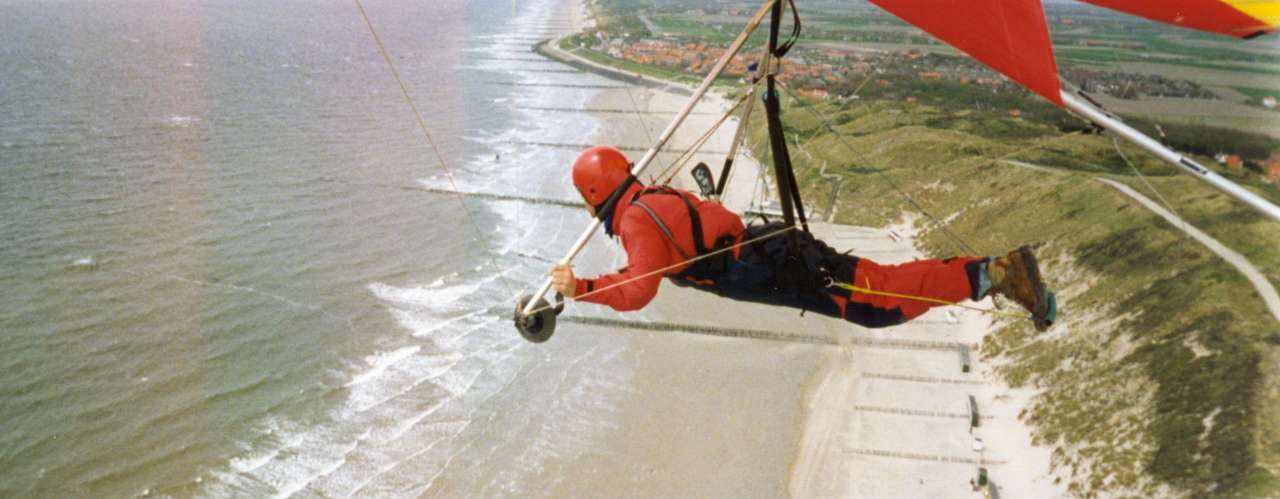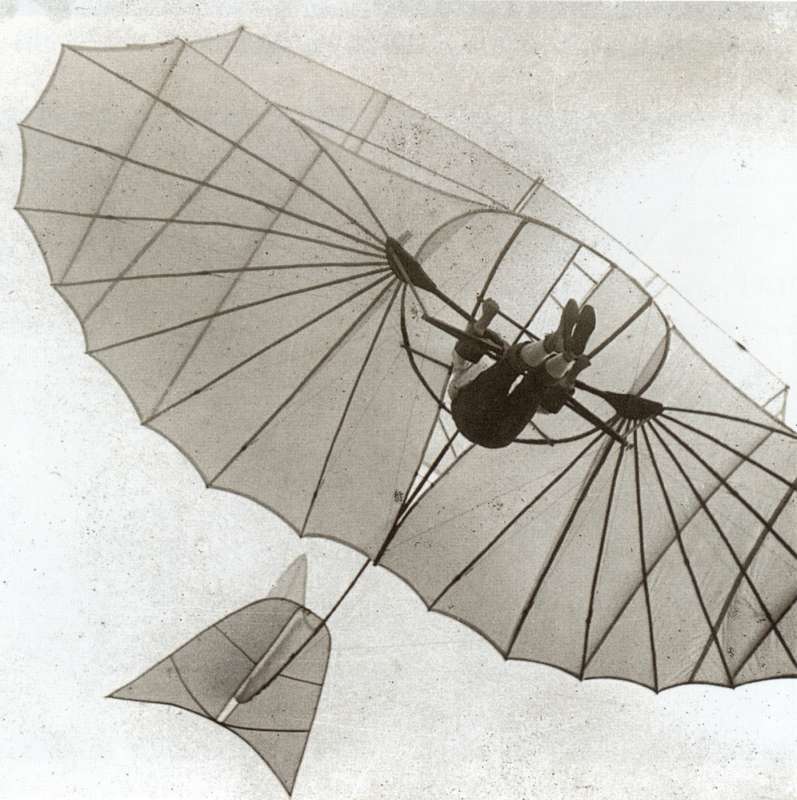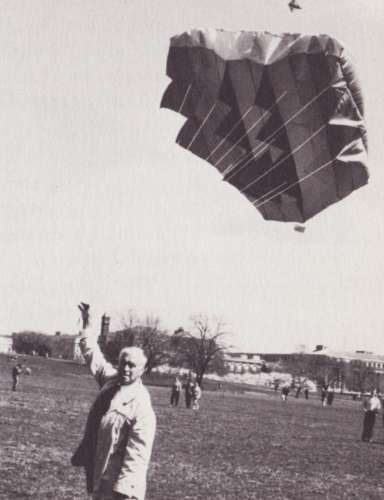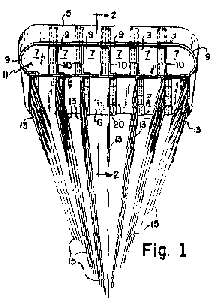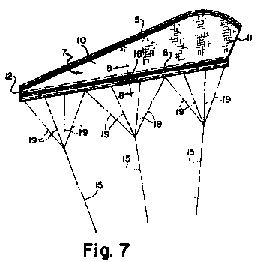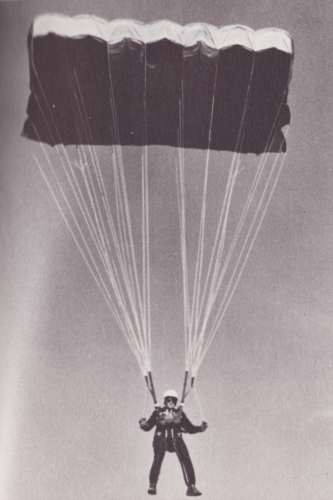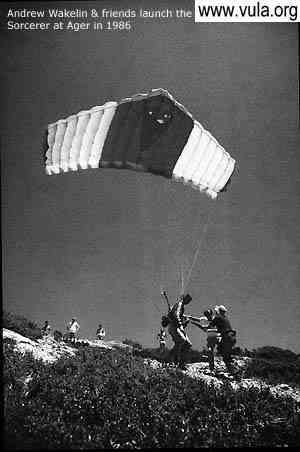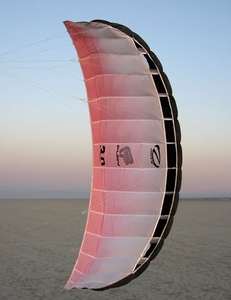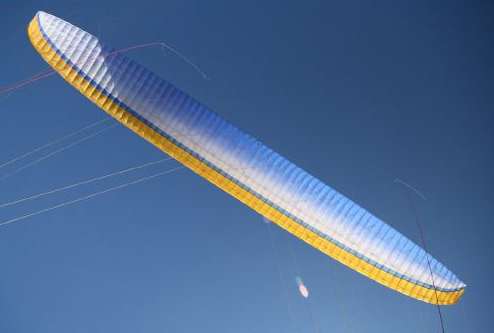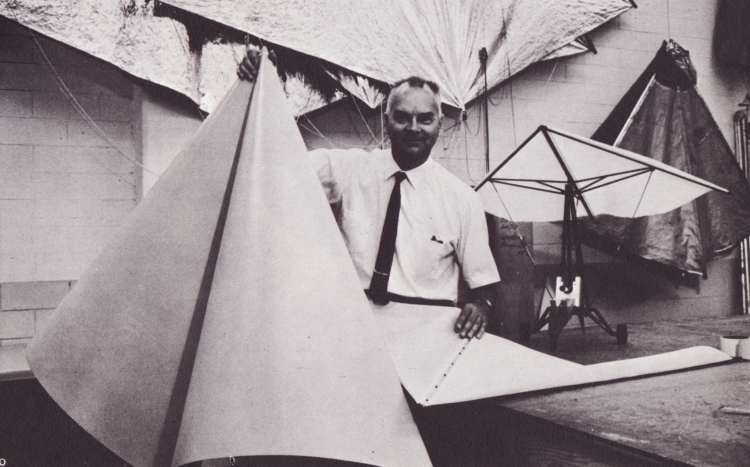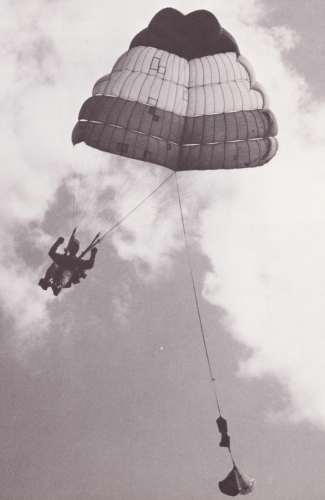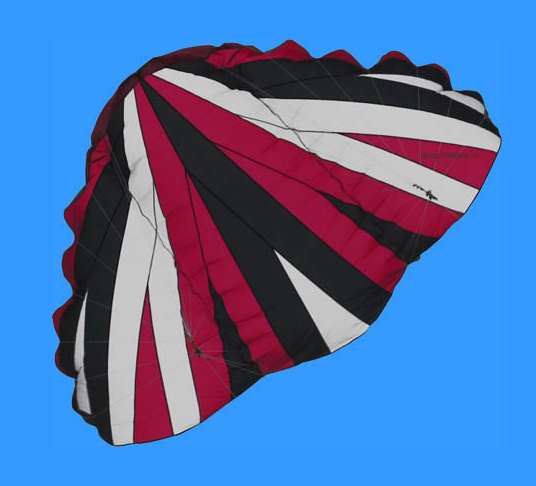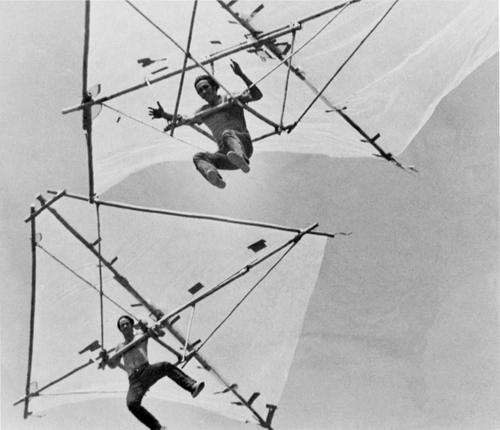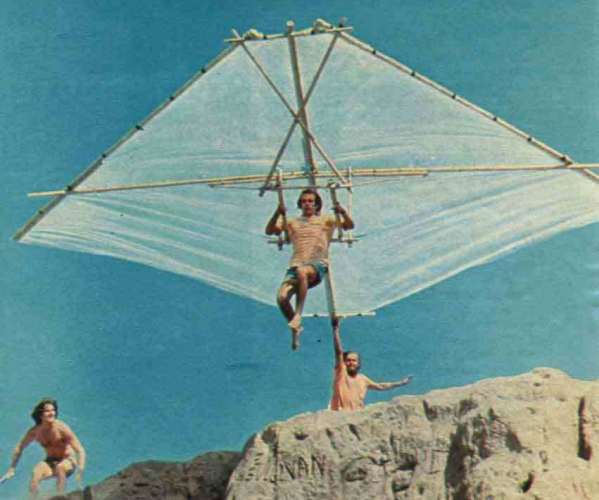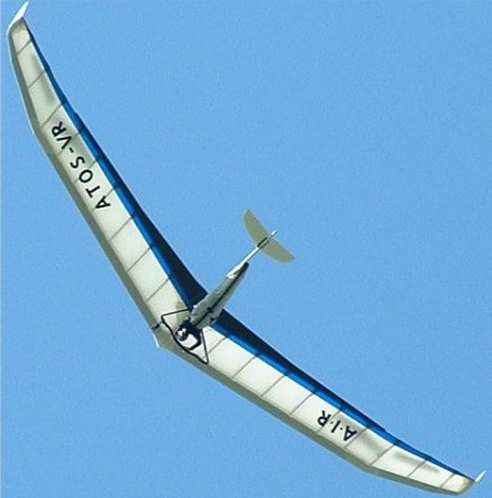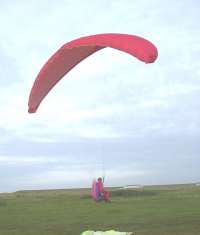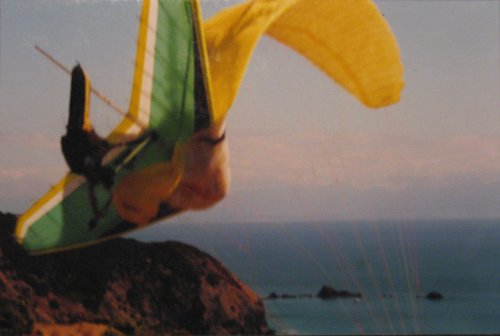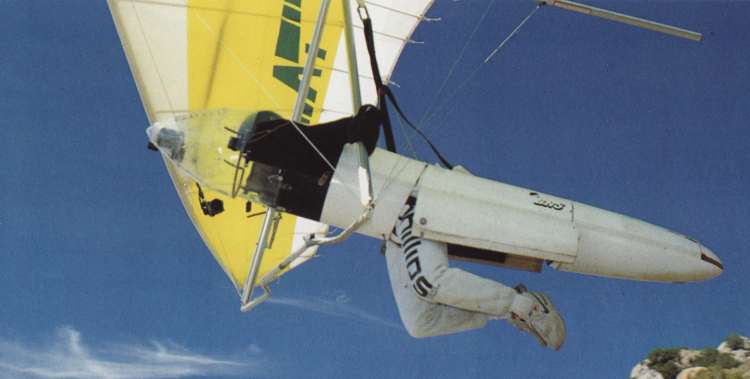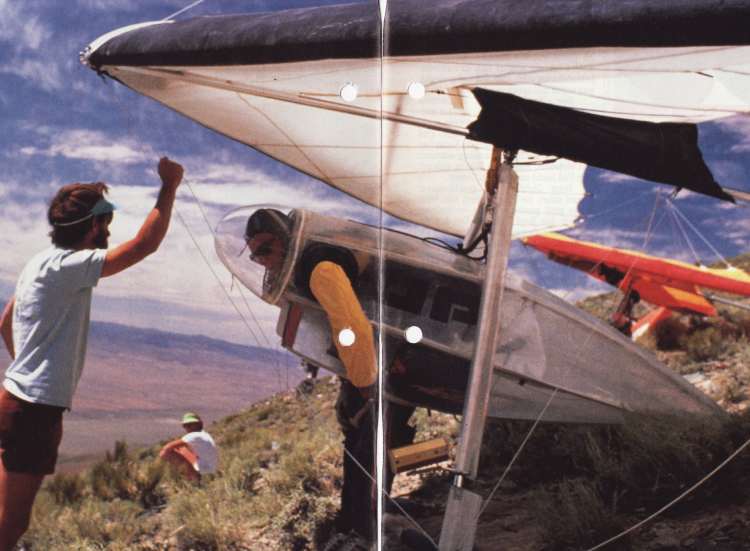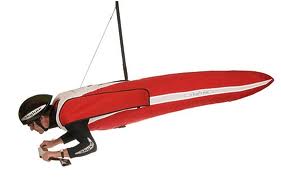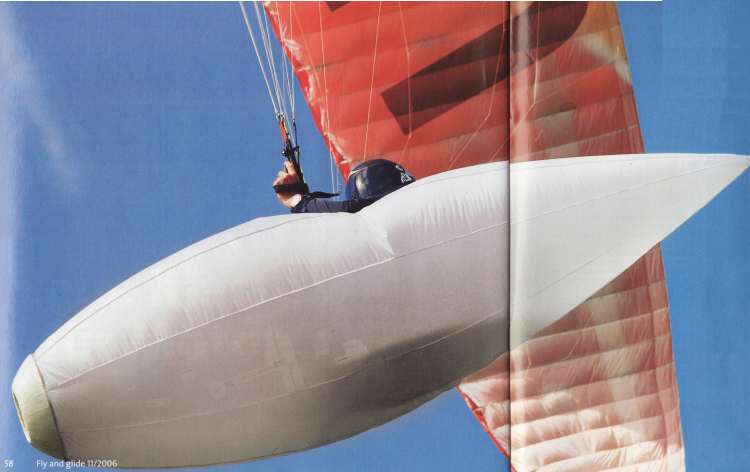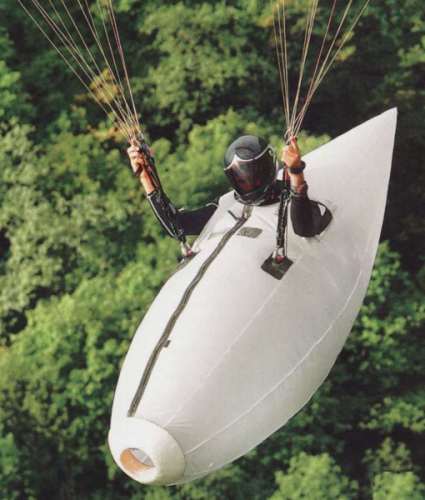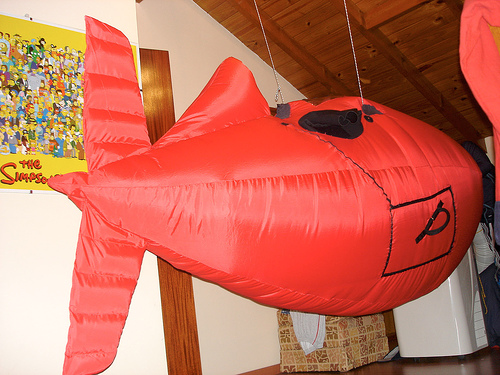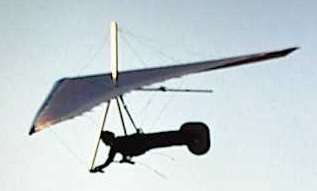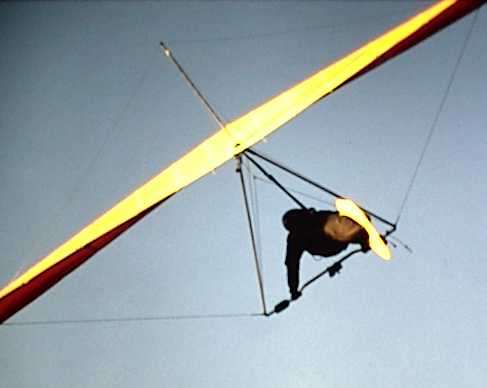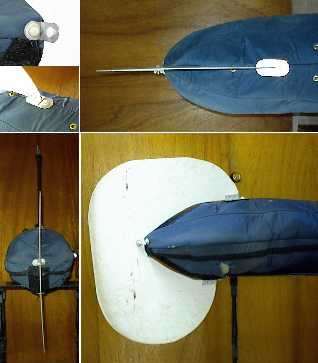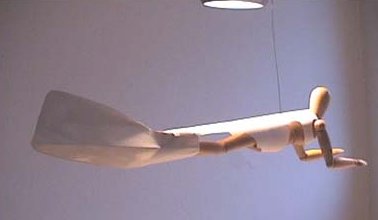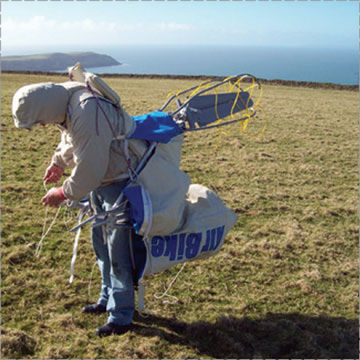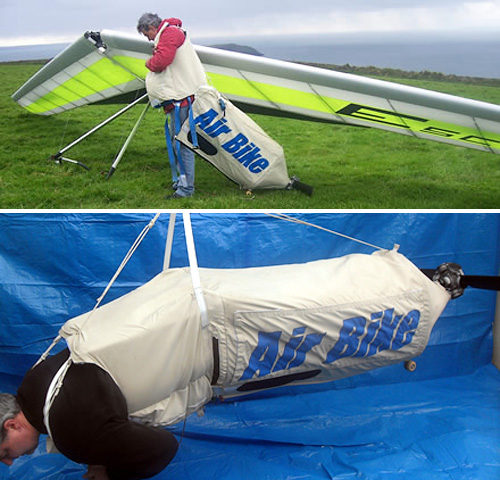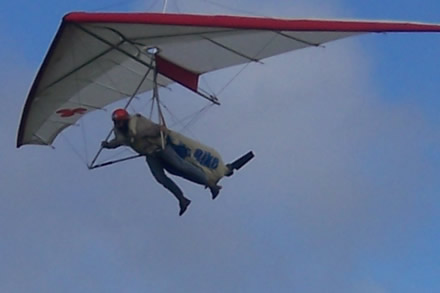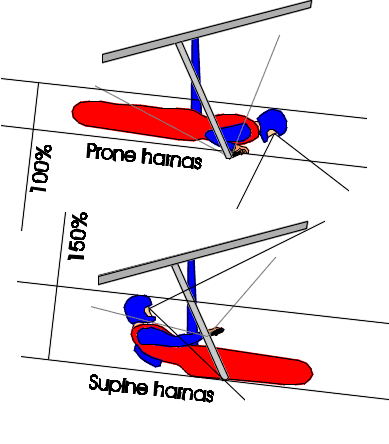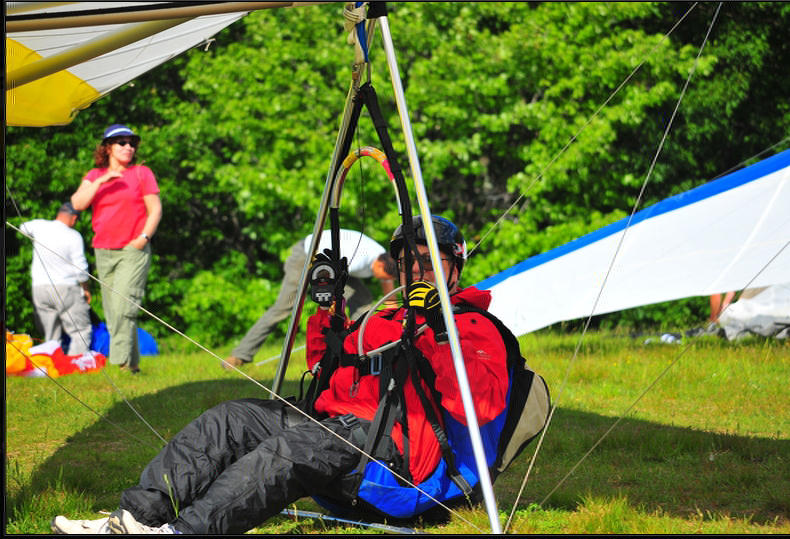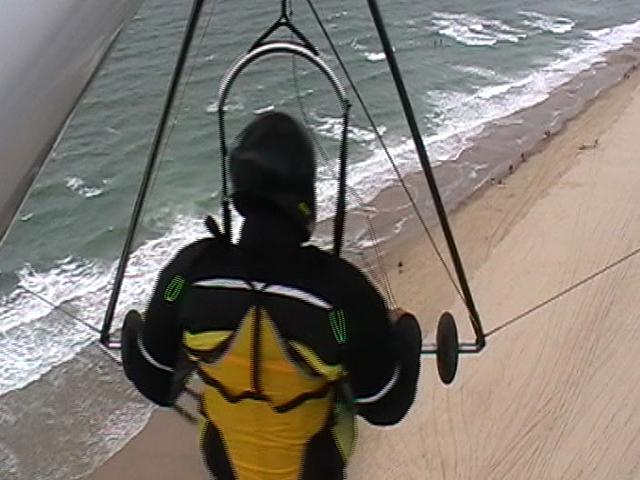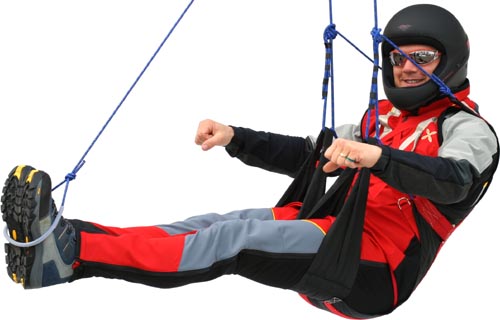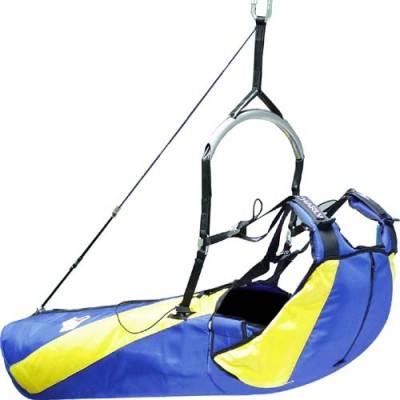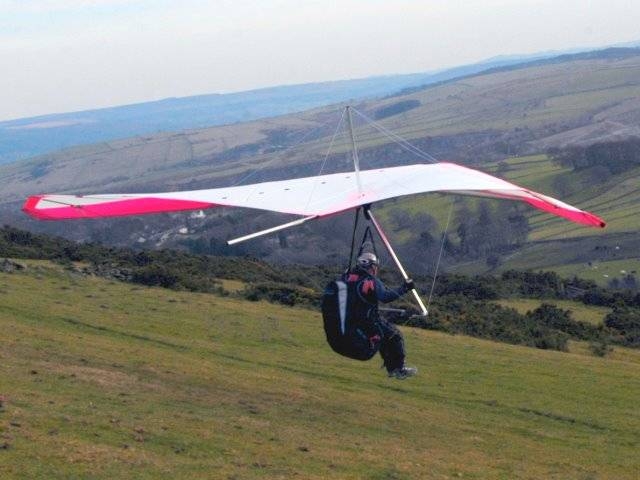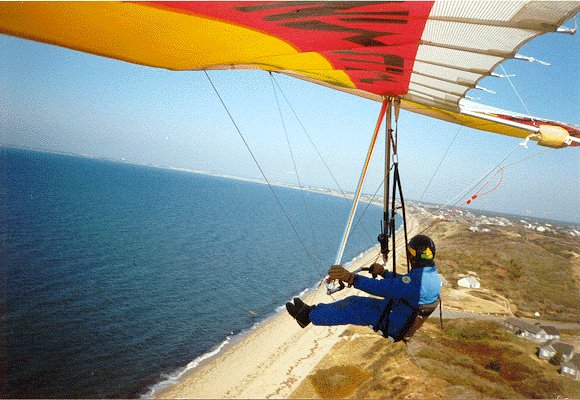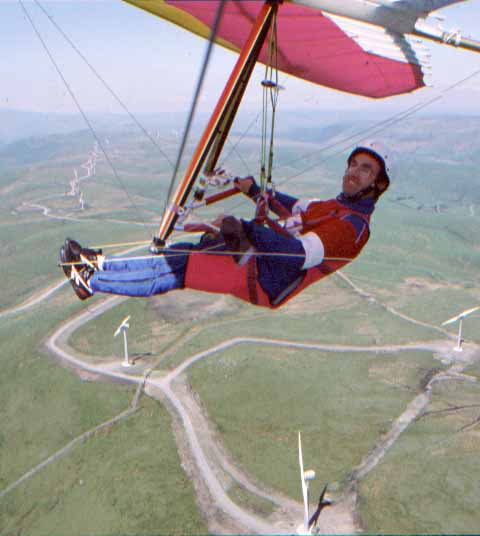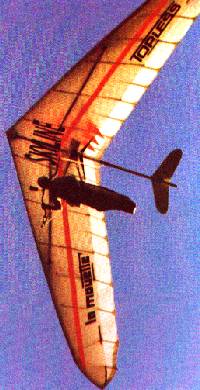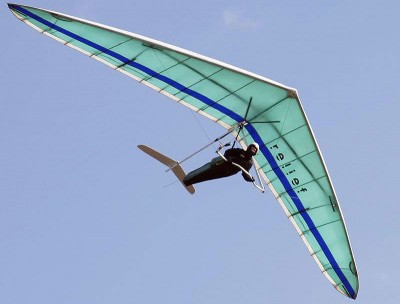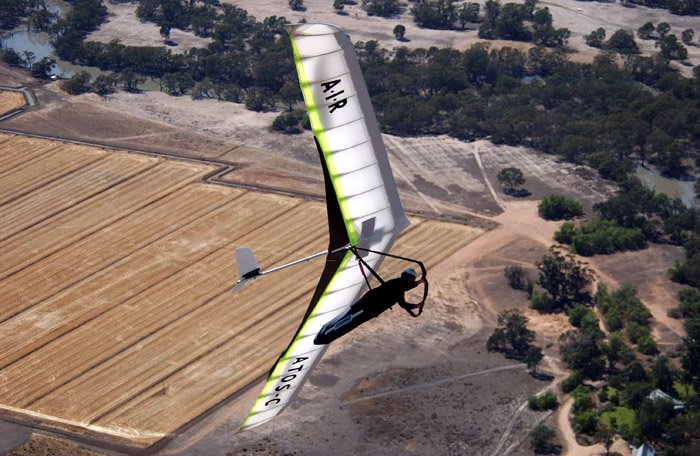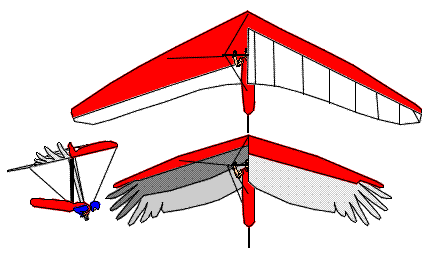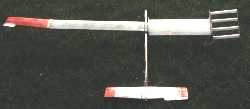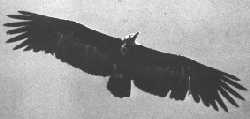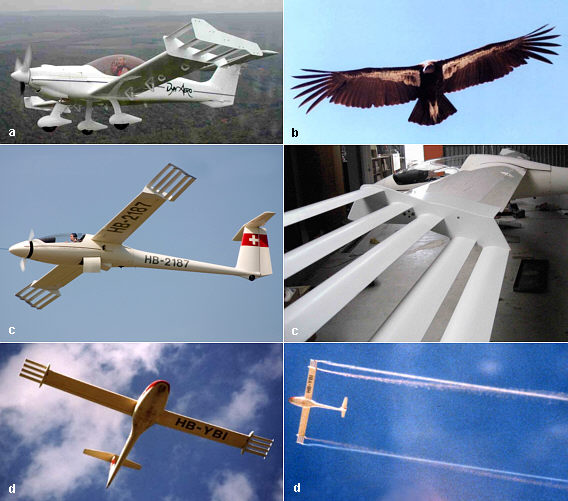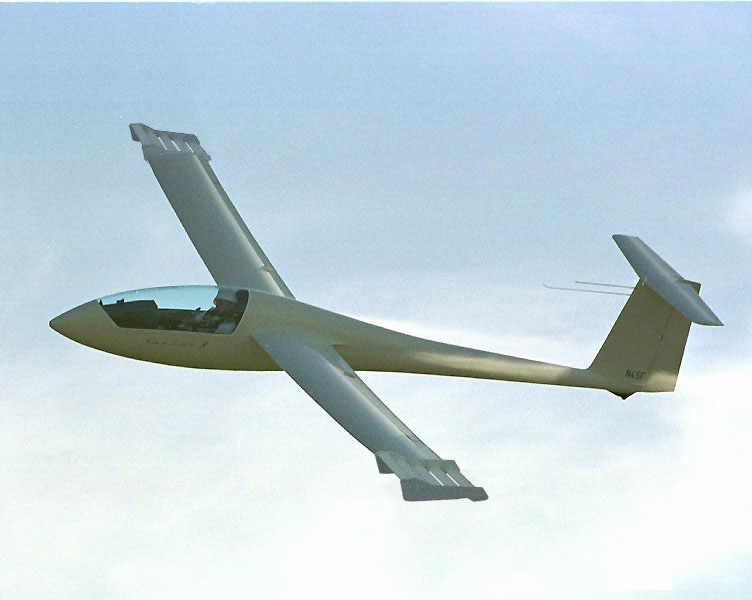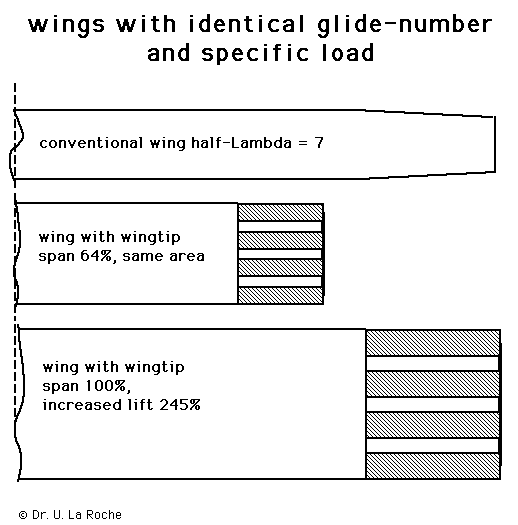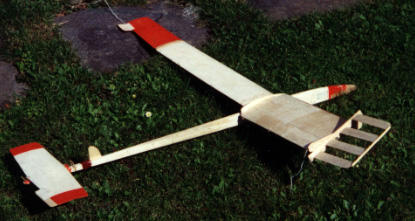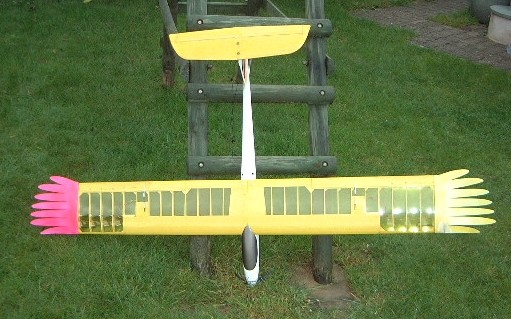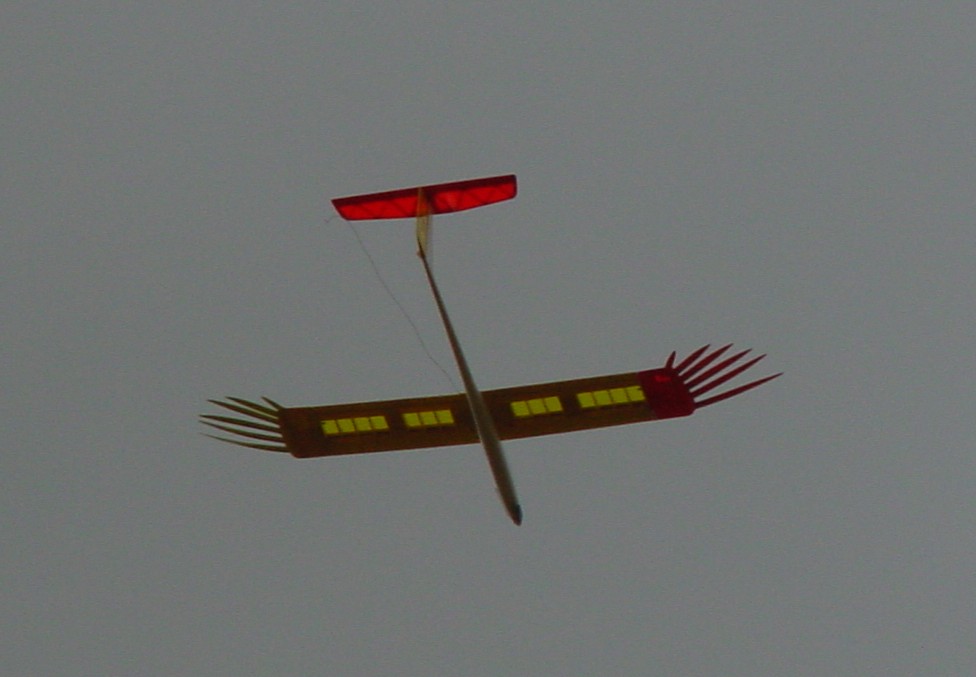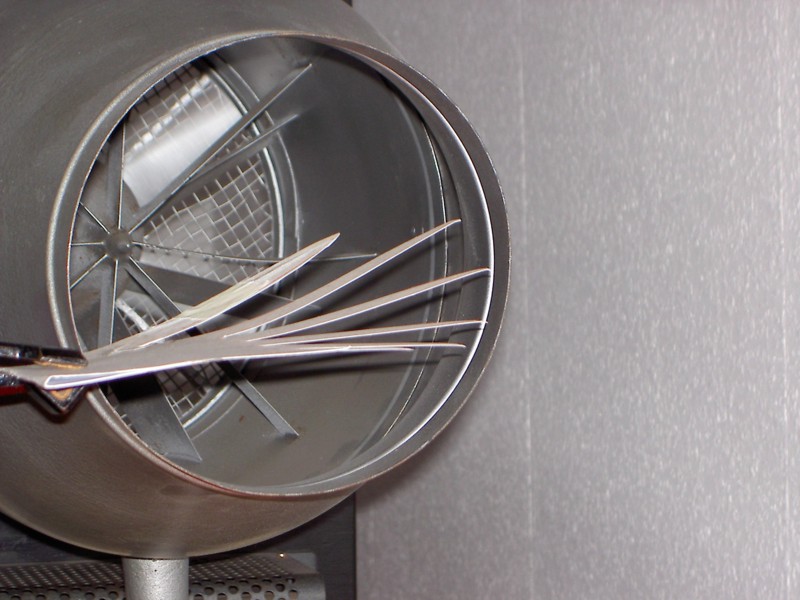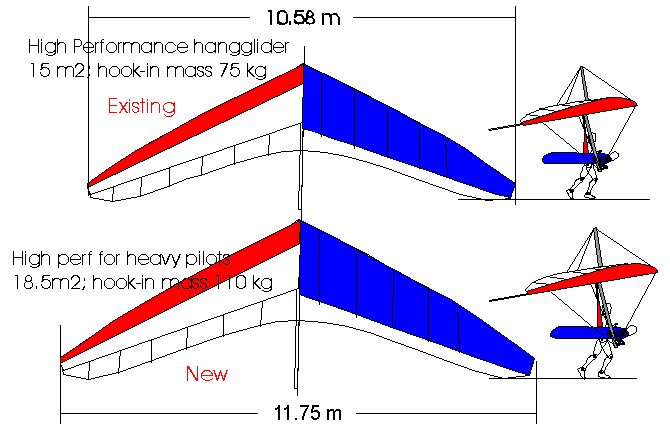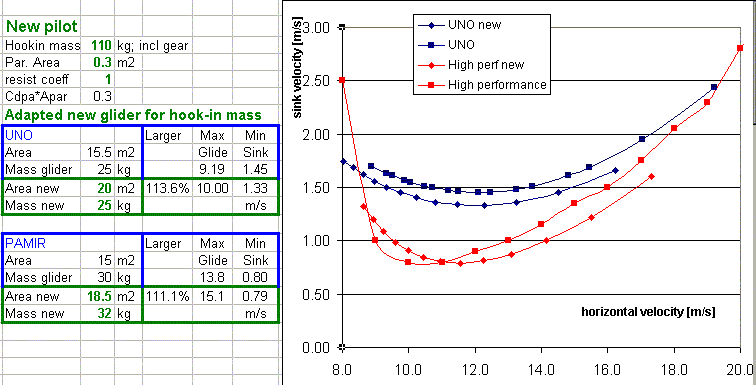Hanggliding and other light air sports
Cross-roads Jalbert - Rogallo
Domina C. Jalbert invented the airfoil shaped kite resulting in the parapente, Rogallo developed dirigable single surface parachutes for spacecraft recovery, they called them parawing. These later became hanggliders and Nasa-wing kites.
Both started with kites and parachutes and their craft ended both as kites and aircraft!!
The pictures below more or less tell the story.
Domina Jalbert
The parawing of Jalbert changed into parachute where it now is the main shape, very powerfully into traction kites and parapentes. The succes of this invention is immense, I wonder if how much he shared in its succes?
Rogallo / NASA
From flexible kite his designs migrated via the bamboo framed rogallo type pvc covered gliders to the modern hanggliders. The other path his invention took was in the direction of kite and there are some remaining applications as dirigable parachutes.
General.
Hanggliding has evolved from a very dangerous sport to one of the safer one. Reasons for this are enhanced aerodynamics. Better structural materials and better designs. The experience and the quality of instruction also play an important role.
If you would like to start with the sport look for a well established hanggliding school. Bear in mind that the sport attracts daredevils but is absolutely unsuited for these characters. You should be man enough to go down the mountain the way you came if the circumstances are not good.
Aerodynamics
This is also a part of the curriculum for getting your hangglider license, but here an introduction in the spirit of this website. Be curious, investigate, try, play and learn. The airfoil of the hangglider is limited by the glider-construction it has to hide. The material is sailcloth, so flexible. The AR (aspectratio=wingspan squared/wingarea) is relatively low. The hangglider has no tail, it is a flying wing. Control over the glider is by shifting weight.
| Type of craft | Max glide ratio | Min sink [m/s] |
| Hangglider | 12 | 0.7 |
| Class2 hangglider (rigid) | 20 | 0.6 |
| Parapente | 7 | 1.0 |
| Glider | 50+ | 0.25 |
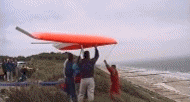
Netherlands
Only recently has it been possible to make overland flights in Holland. As our country is crowded and small. All our starts in thermal conditions are by winch. Using the stepped approach, altitudes of upto 750m can be legally reached, enough to connect with the thermals.
Long duration flights in Holland are all made in dune soaring conditions. Our seaside dunes allow excellent dynamic lift hanggliding. At Zoutelande for example in the late seventies the flying time already exceeded 8 hours.
Hanggliding versus parapente
The main difference between these two is the rigid frame of the hangglider. The result is a semi rigid aerofoil, enabling higher performance than the inflated shape of the parapente.
Although parapente flying is easier to learn, the inherent danger is folding of the aerofoil in turbulence. Modern parapente's will stabilise after only 10m of vertical fall. This is still enough to kill when you are close to the ground. My training as a parapente pilot led me to conclude that a hangglider is more like a plane than a parapente, but the parapente is easier to fly and particularly easier toe land.
Streamlined pods.
The pilot is the least well streamlined part of hanggliders and parapente's. With hanggliders the consensus seems to be that a normal harness streaamline is enough, even with high performance gliders (and high flying speeds). This I find very surprising. earlier experiments with streamlined pod harnesses were too early as the increase in aerodynamic efficiency is too low. The images of these experiments altough are interesting.
Competition parapentiste Luc Armant has made a very beautiful selfinflating harness for his parapente. The shape looks very convincing. The flying pressure will inflate the pod. Openeing the zipper will allow Luc to land.
PHYN
A problem many hangglider pilots have is keeping their body straight in the airflow, look at photographs and you often see that pilots are not aligned, thus causing extra resistance.
This "Phyn" (DIY) seems to be a solution to this problem. I suspect that steering also is a bit easier with this harness as there is something tot push against.
Human propulsion.
In 1990 Drachenflieger magazine (then: Fly and Glide; now: Thermik) publishes an article about the muscle power assist system of Billy Brooks, the English aircraft engineer working at Solar wings.
He is calling his system quite logically Air-Bike.
The light weight system does not make autonomous flight possible. That is still the prerogative of the ultralight human powered planes (Gossamer albatross ed.)
The decreases the minimum sink of about 1m/s to about 0,7 m/s. The glide ratio is increased by about 30% at 40 km/h.
Billy Brooks used a 2,1m diameter, folding propeller. Each blade weighing only 200 gram. The gear ratio was 4:1 (prop:legs). The pedals are connected to the propeller with a toothbelt (?? I cannot find the English word for it). The clever bit being that it is forced around two rollers to make a 90 degree angle. This makes a light efficient gearbox.
The propeller pedal unit is hinged at the end of the harness and suspended from it by two wires. Starting and landing is easy as can be seen from the pictures. In 1990 Brooks and all others were very enthousiastic about the system. I have heard little more about it.
Supine
This type of harness is not new. Prototypes are in use. I know that AVIAN tried to find a market for them. The advantage of supine flying is that the flying position is more relaxed. When flying in the normal position it is neccessary to hang yourself head down. This then requires much muscle tension in the neck and does hardly allow you to look upwards. The drawing shows a supine harness in a comfortable position comparable to recumbent bicycles.
For many hours cycling on recumbent bicycles I know that the strain on the forward neck muscles is very limited in this postion. The design shows an elevated crossbar instead of lifting your legs over the normal crossbar. This will need some extra evaluation.
Hangglider Tailplane.
Glider up to 1996all had a mast and lufflines to generate positive pitch at negative angles of attack. The now so popular gliders without a mast, and also without the parasitic drag of mast and lufflines, has to produce all its positive pitch from structural elements in the sail. It is logical that the required stiffness of the hangglider frame / sail combination is limited. This year it was contested that the relative large number of tuck may be the result of lack in positive pitch at negative angles of attack, particularly in the dynamic situations of a tuck. Dynamic situations also test the stiffness of a construction it the limit.
Tuck was a problem, so much so that the top glider builders now have started to an anti -tuck tailfin. The tailplane is hinged and can freely move upwards, not creating any problems with landing. Once more Jos Guggenmos is the inventor.
I think that the tailfin which now does not assist in aerodynamics, except for anti-tuck, will in the near future become an essential pitch an aerodynamic efficiency increasing element.
Alternative wingshape.
Why not learn something from the people at winggrid and nature. Hangglider construction lends itself much more for this kind of wing than for the super high aspectratio wings of gliders. This idea seems totally unrealistic ....
Glidersize.
Analyzing the world hanggliding list and looking at the glider loading (weight of glider+pilot+gear divided by glider area [kg/m2]), I have found the following.
For all hanggliders in the world:
|
Types
Competition types |
Average design loading
[kg/m2] |
Max design loading
[kg/m2] |
Min design loading
[kg/m2] |
|---|
|
All hanggliders, incl recreational |
7.67 |
13.46 |
4.52 |
|
Airwave classics |
7.4 |
5.68 |
8.75 |
|
Bautek |
8.2 |
10.33 |
6.00 |
|
Guggenmos |
8.03 |
9.42 |
5.91 |
|
Icaro |
8.36 |
6.44 |
10.45 |
|
Wills Wings |
7.61 |
5.86 |
10.00 |
One would expect the higher loading values for the small competition gliders, this is not true. There is a marked tendency for larger gliders to have higher loadings. I find this peculiar.
What it means is that heavier pilot (who need a larger glider) have relatively higher wing-loading. As you know this means less performance with regard to minimum sink and max glide ratio, but better speed potential (as the glider polar has shifted to higher speed values).
I do not like that, as a heavy (but not overweight pilot) I would like to compete a an equal level with all the others.
Using the average wingloading for good gliders, ie 7.71 kg/m2, I would need a glider of approximately 18.2 m2, which is considerably larger than the 15.2 m2 which is advised to me.
The Hangglider made to size.
In app 2000, I did some calculations and made a new design, which I want to share, the basic thinking is still valid, also for paragliders.
As explained in my hanggliding webpage. Hanggliders are on average designed for small and lightweight people. As the general population is growing, both weight and size increase.
This is a problem with the trend in current hangglider design.
To add to this competition hanggliding is all about speed, getting there (and to the ground) first. This requires a high wingloading. On top of this most competition hangglider pilots are small (or at least: light). As a consequence of this most hangglider builders have 13.5 m2 gliders for us to use. Handling is less important.
For normal people there is little fun in this.
The recent development of skyfloating seems to be a reaction to this (and of course to the immense parapente development). Affordable, light gliders with immense sailarea's and easy handling. I have analysed them and the problem is performance at speed.
I suppose a lot of fellow pilots enjoy the sport with staying aloft as long as possible, while feeling safe and having an easy time flying, in as many conditions as possible. With skyfloating we throw away a lot of the developments of recent years.
We should opt for larger hanggliders along the same lines of recent high performance gliders.
We should even consider making hanggliders to size, everyone the gliders size that suits him, and not speeding around on too small gliders.
Some calculations and a rough design are presented below, for (sorry my own hook-in mass).
Which builder, takes up the challenge and will adapt his high performance glider to this idea.
The UNO wass a much sold single suface beginners hangglider by FIREBIRD. I have used this hangglider as the example for the single surface glider. I have used the polar curve of the PAMIR as example for a high performance hangglider. The calulations can be done for any polar curve, using a spreadsheet.
Wind & Water Try, Play, Learn and Enjoy..


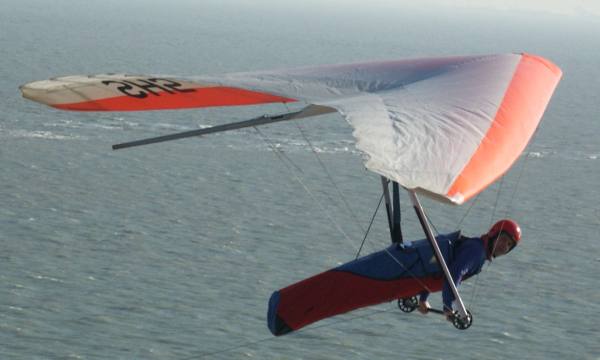 Hanggliding /
Hanggliding /  Dune Gooning
Dune Gooning